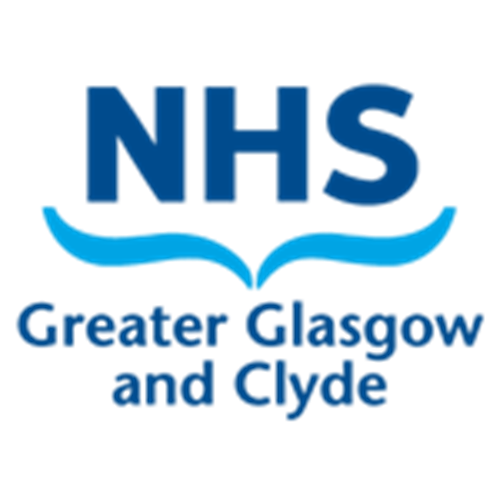| Fetal Medicine review Discussion with Paediatric Nephrologists Neonatal management plan documented in maternal notes |
Antenatally Detected Renal tract Abnormalities Management (578)

Objectives
The aim of this guideline is to standardise referral to appropriate health care providers when antenatally detected renal tract abnormalities are detected
| Please report any inaccuracies or issues with this guideline using our online form |
Renal tract abnormalities account for 20% of major fetal anomalies detected in the second and third trimester. The detection rate for these anomalies is in the region of 80%. Although the majority of abnormalities have a favourable outcome or resolve spontaneously, a proportion will go on to have renal dysfunction in the neonatal period requiring medical or surgical intervention. Anomalies may be unilateral or bilateral, associated with renal parenchymal disease and may demonstrate oligohydramnios. Oligohydramnios at early gestations is associated with pulmonary hypoplasia and early neonatal death. Appropriate identification and counselling of these patients should identify those at risk requiring antibiotic prophylaxis and follow up scans and those where outcome is unlikely to be favourable.
During the 18-20 week scan fetal kidneys can be identified as hyperechoic in comparison to bowels. Colour flow Doppler can be used to demonstrate the presence of renal arteries branching from the descending aorta. The ureters are not typically seen and should measure <1mm in diameter. Measurements of the renal pelvis should be taken from the AP diameter. Document any calyceal or ureteric dilatation, uterocole or any parenchymal abnormalities.
- Transient hydronephrosis 41-88%
- Pelvicureteric junction obstruction 10-30%
- Vesicoureteric reflux 10-20%
- Vesicoureteric junction obstruction and megaureter 5-10%
- Multicystic dysplastic kidney 4-6%
- Duplex kidney +/- ureterocoele 2-7%
- Posterior uretheral valves 1-2%
- Urethral atresia / Urogenital sinus / Prune belly syndrome / Tumour <1%
|
Complete GGC alert form – send to neonates plus copy in notes |
- Date and agreed gestation at the time of scan
- Amniotic fluid volume
- Assessment of kidneys - position, size, texture, renal pelvis AP diameter
- Appearance of ureters and collecting system
- Bladder - volume, bladder wall thickness, emptying
- Any other concerns
Renal pelvis dilation on antenatal ultrasound occurs in 1-2% of all pregnancies. It is bilateral in 17-54% of cases. An AP diameter of >15mm at 20 weeks is associated with a 50% reduction in renal function. Moderate hydronephrosis of 10-15mm is associated with a 30% reduction in renal function.
- Vesicoureteric reflux demonstates unilateral or bilateral renal pelvis dilation and can cause renal scarring in-utero, resulting in poor renal function.70% of mild reflux cases resolve spontaneously. . Postnatal antibiotics and MCUG scans are required. This condition has a 30% recurrence rate.
- Pelviureteric junction obstruction has an incidence of 1/2000 live births and is unilateral in 90% of cases. It shows a dilated renal pelvis with normal ureter and bladder. Postnatal antibiotics and MCUG and DMSA scans will be required to assess severity of the disease.
- Vesicoutetric junction obstruction is associated with a dilated ureter and is bilateral in 25% of cases Postnatal antibiotics and MCUG and DMSA scans will be required to assess severity of the disease. Ureteric re-implantation may be required
- Posterior uretheral valve have an incidence of 1/5000 to 1/8000 occurring in males leading to bladder neck obstruction and demonstrated a thick walled distended bladder with dilated posterior urethra, oligo- or anhydramnios, hydroureter and hydronephrosis. 8% of cases have chromosomal abnormality. 44% of surviving babies develop end stage renal failure by age 5. Urethral atresia presents similarly but does not demonstrate posterior urethral dilation and has anhydramnios with severe prognosis.
Unilateral renal agenesis has an incidence of 1/1000-4/1000 it has a normal prognosis but needs neonatal follow up to ensure no abnormalities exist in the kidney.
Bilateral renal agenesis results in neonatal death secondary to pulmonary hypoplasia and has a recurrence rate of 3-6% in future pregnancies
Infantile polycystic disease is autosomal recessive with an incidence 1/40,000 - 1/50,000 live births and demonstrates bilateral symmetrically enlarged hyper-echoic kidneys with a small or absent bladder and oligohydramnios. Prognosis of this condition is poor.
Multicystic dysplastic kidney results spontaneously and demonstrates multiple non communicating cysts of different sizes affecting one or both kidneys. incidence 1/3000 live births. It can be associated with cardaic, GI and CNS abnormalities. Unilateral disease has a good prognosis but bilateral disease is associated with anhydramnios, pulmonary hypoplasia and neonatal death
Adult polycystic kidney disease has an incidence of 1/1000 live births and is autosomal dominant. It results in cystic dilation of the nephrons of both kidneys and may not be demonstrated until the third trimester. If detected antenatally 43% of babies die within the first year of life.
Obstructive cystic dysplasia has an incidence of 1/8000 live births and results from obstruction of the urinary tract in the 1st or second trimesters. It can be unilateral or bilateral and is demonstrated by a small echogenic kidney, cortical cysts, and other signs of obstruction e.g. hydroureter. It is associated with VACTERL abnormalities. Unilateral disease has a good prognosis.
Renal pelvis dilatation detected antenatally GGC alert form
Renal anomalies detected or suspected antenatally (WoS Neonatal guideline)